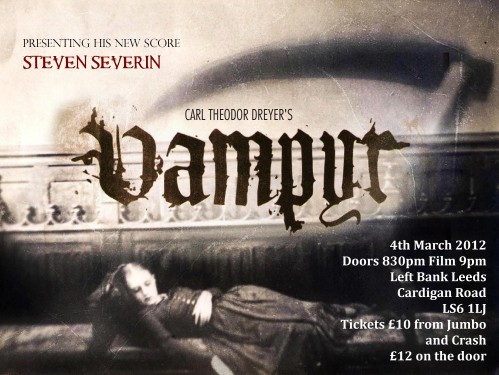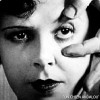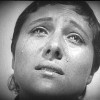 Last week, Adam Ryan gave us a write-up of Hauschka’s musical interpretation of Carl Theodor Dreyer’s Vampyr at the Howard Assembley Room. Well Simon Hall from Left Bank Leeds gives us another chance to catch the film, this time with musical accompaniment from Siouxie and the Banshees co-founder Steven Severin.
Last week, Adam Ryan gave us a write-up of Hauschka’s musical interpretation of Carl Theodor Dreyer’s Vampyr at the Howard Assembley Room. Well Simon Hall from Left Bank Leeds gives us another chance to catch the film, this time with musical accompaniment from Siouxie and the Banshees co-founder Steven Severin.
So, The Artist is the best film of the last year? I wonder if David Cameron would have funded it… Experts on silent movies have even given the film their support. But amongst all that romance the history of film is being ever-so-slightly rewritten. The early years of film were indeed dominated by romance, adventure and knockabout comedy (plus ca change…), but very soon the medium was being given a bit of a workout. As early as 1910 Thomas Edison was producing a version of Frankenstein, and film’s capacity to not just enchant and beguile, but scare and disorient, was soon being exploited in a variety of ways. Today’s horror movies tend to use suspense, shocks and gore as their staple tools, but the early film pioneers were still experimenting, particularly with surrealistic elements. In many ways the limitations of technology and the values of the time meant that filmmakers had to use many different techniques to build dread and fear, and surrealism was a natural ally.
 When Bunuel and Dali released the silent Un Chien Andalou (image right) in a single theatre in Paris in 1929, they claimed their only purpose was to create a film that had no narrative and no inner meaning that could be deciphered (except maybe by psychoanalysis). The film became an unlikely success, running for eight months, and is still hailed as a high point of both surrealism and ‘cinema as art.’ Yet it is also a celebrity-endorsed example of a wider movement that was already in full sway. Those who love early movies might argue that the most famous, sensational and popular examples of a genre are not always the best. And by 1929 the silent era was already coming to an end. Enter Carl Theodor Dreyer.
When Bunuel and Dali released the silent Un Chien Andalou (image right) in a single theatre in Paris in 1929, they claimed their only purpose was to create a film that had no narrative and no inner meaning that could be deciphered (except maybe by psychoanalysis). The film became an unlikely success, running for eight months, and is still hailed as a high point of both surrealism and ‘cinema as art.’ Yet it is also a celebrity-endorsed example of a wider movement that was already in full sway. Those who love early movies might argue that the most famous, sensational and popular examples of a genre are not always the best. And by 1929 the silent era was already coming to an end. Enter Carl Theodor Dreyer.
 Dreyer was a Danish journalist who went to Paris to work in the French film industry. He was influenced by Jean Cocteau and his first film, The Passion of Joan of Arc (image left), considered by many to be the greatest film of the silent era, combined both ultra-realist (close-ups with no makeup) and more artsy elements. But Dreyer’s next film, Vampyr, really set the cat among the pigeons. Made in 1932, but virtually silent so the film could be shown in different countries, Vampyr is a very different film to the schlock-horrors that Hollywood was beginning to produce. Although on the surface it’s another vampire-hunting movie, the film has at least as much in common with Un Chien Andalou as any conventional horror movie, being a meditation on the disorienting and dehumanising effects of fear. In one of many indelible scenes, the main protagonist dreams of his own burial, the camera taking a corpse’s eye view of proceedings. Needless to say, the film bombed, and Dreyer didn’t make another film until 1943.
Dreyer was a Danish journalist who went to Paris to work in the French film industry. He was influenced by Jean Cocteau and his first film, The Passion of Joan of Arc (image left), considered by many to be the greatest film of the silent era, combined both ultra-realist (close-ups with no makeup) and more artsy elements. But Dreyer’s next film, Vampyr, really set the cat among the pigeons. Made in 1932, but virtually silent so the film could be shown in different countries, Vampyr is a very different film to the schlock-horrors that Hollywood was beginning to produce. Although on the surface it’s another vampire-hunting movie, the film has at least as much in common with Un Chien Andalou as any conventional horror movie, being a meditation on the disorienting and dehumanising effects of fear. In one of many indelible scenes, the main protagonist dreams of his own burial, the camera taking a corpse’s eye view of proceedings. Needless to say, the film bombed, and Dreyer didn’t make another film until 1943.
Fortunately you have a chance to see Dreyer’s Vampyr in all its glory, in the neo-gothic grandeur of Left Bank Leeds. Steven Severin, once of Siouxsie and the Banshees, has written a new score, and will be accompanying the film live on March 4th. You can get tickets right here:
Read Adam’s write-up of the Vampyr screening that took place at the Howard Assembly Room
If you have any film related stories, articles, reviews with a twist, etc, contact The Culture Vulture’s film editor Mike McKenny on mike.mckenny1983@gmail.com or find him on Twitter @DestroyApathy
There was a reason silent movies died out.
There is indeed a reason silent movies died out, but 99% of experimentation died out pretty quickly too.
May have to check this for a bit of comparison, and hopefully see someone deliver to greater effect than Hauschka achieved!
Here’s an interview with Steven Severin which covers his composing work for “Vampyr” – http://www.rockcellarmagazine.com/2012/04/16/from-banshees-to-vampires/